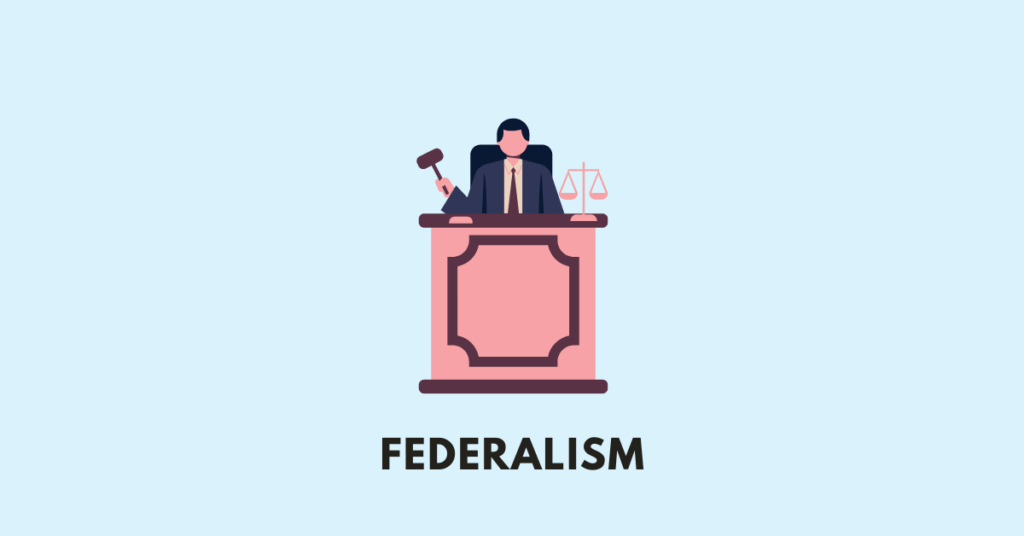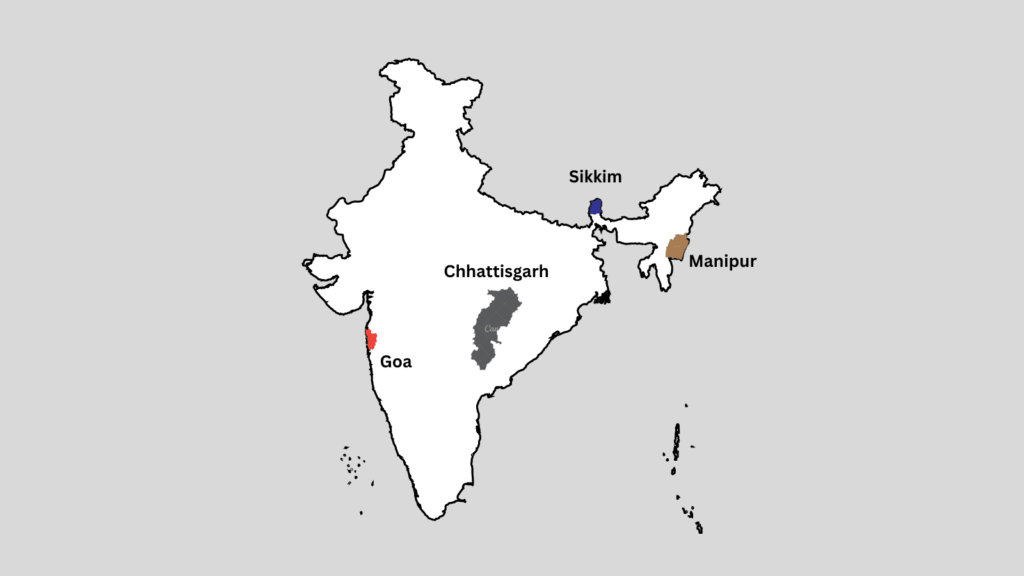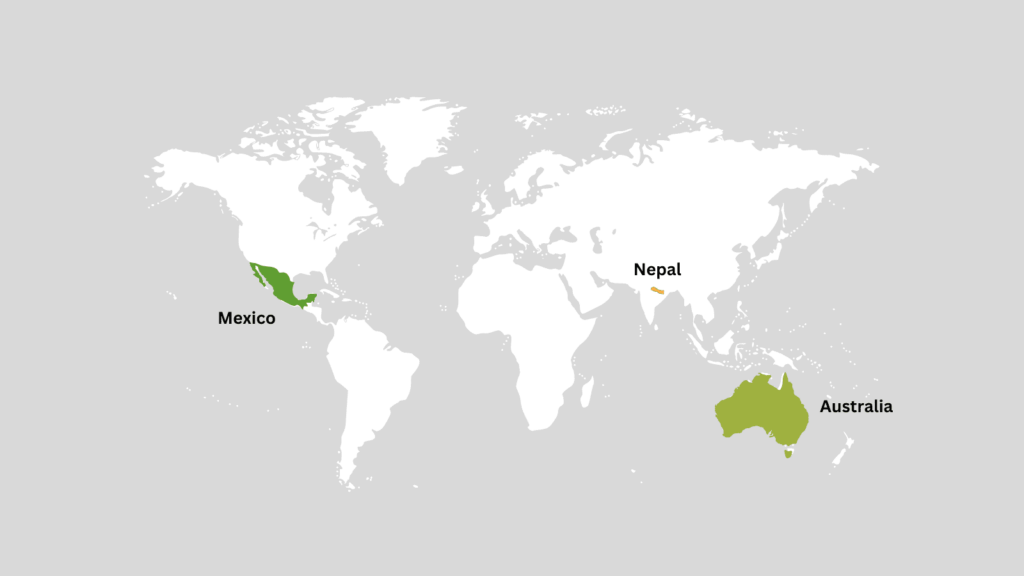Get here the notes, questions, answers, textbook solutions, summary, additional/extras, and PDF of TBSE (Tripura Board) Class 10 Social Science (Political Science/Democratic Politics II) Chapter 2 “Federalism.” However, the provided notes should only be treated as references, and the students are encouraged to make changes to them as they feel appropriate.

Summary
Federalism is a form of government in which power is divided between a central authority and constituent units such as provinces or states. This system seeks to strike a balance between unity and diversity by allowing both the central and regional governments to have their own powers and responsibilities while remaining accountable to the people. Federal systems have dual objectives, which necessitate mutual trust and agreements among the various levels of government. Approximately 40% of the world’s population lives in 25 federal countries, the majority of which are large countries.
The balance of power between the central and state governments varies by country and is primarily determined by the historical context in which the federation was formed. There are two ways to form a federation: independent states joining together or a large country dividing its power. A federal country’s constitution specifies the jurisdiction of each level of government and the sources of revenue, and the highest court has the authority to interpret the constitution. India is a federal country with three levels of government: the Union of India, state governments, and panchayats and municipalities. The Indian Constitution establishes a two-tiered government system with the Union (Central) Government and State Governments, each with distinct responsibilities and powers.
The Union List includes subjects of national importance such as defence, foreign affairs, and banking, whereas the State List includes subjects of state and local importance such as police, agriculture, and commerce. The Concurrent List includes subjects of mutual interest to the Union and State Governments, with the Union Government having the authority to override any conflicting state laws. Union Territories, such as Chandigarh and Delhi, are governed by the Central Government and have limited powers. Some states, such as Jammu and Kashmir, have a special status with unique provisions and powers. The division of power between the Union and state governments is a fundamental aspect of the Constitution that can only be changed with a two-thirds majority vote in both Houses of Parliament and ratification by at least half of the state legislatures. The judiciary is critical in resolving disputes, and the Union and state governments have the authority to raise funds through taxation.
Federalism’s success is attributed to the democratic nature of Indian politics, which has resulted in shared ideals of respect for diversity, the spirit of federalism, and the desire for unity. The formation of linguistic states, language policy, and the restructuring of center-state relations are all important factors in the practise of federalism in India. The use of Hindi as the official language, as well as the recognition of 21 other languages, has allowed for greater inclusivity. The rise of regional political parties and the formation of coalition governments at the centre have bolstered center-state relations. Respecting the independence of state governments fosters a new culture of power sharing and appreciation for the concept of federalism.
The need for power decentralisation and the establishment of a third tier of local government. The Constitution was amended in 1992 to give local governments more power and effectiveness, and regular elections are now required. The basic idea behind decentralisation is that local people have a better understanding of local issues and can participate in decision making. Seats are reserved for underrepresented groups, and a new independent institution, the State Election Commission, has been established to oversee local elections. Panchayati raj is the name given to rural local government. The need for decentralisation was recognised by the Constitution, and several attempts have been made to decentralise power to the village and town level.
The village level is the lowest level of local government in India. The Gram Panchayat is the village’s decision-making body, and it is overseen by the Gram Sabha. The Zilla Parishad at the district level is mostly made up of elected members and is led by a chairperson. At the intermediate level, the Panchayat Samiti or Mandal is made up of several Gram Panchayats grouped together.
Municipalities for towns and municipal corporations for large cities are both run by elected bodies with a chairperson or mayor as the political head. The Prime Minister leads the country, the Chief Minister leads the state, and the chairperson of the Zilla Parishad leads the district.
Textual questions and answers
1. Locate the following States on a blank outline political map of India: Manipur, Sikkim, Chhattisgarh and Goa.
Answer:

2. Identify and shade three federal countries (other than India) on a blank outline political map of the world.
Answer:

3. Point out one feature in the practice of federalism in India that is similar to and one feature that is different from that of Belgium.
Answer: In India, like in Belgium, the practice of federalism involves the sharing of power between the central and state governments. However, in India, the power sharing is not based on language communities, but rather on the states and union territories that make up the country.
5. State any two differences between the local government before and after the Constitutional amendment in 1992.
Answer: Before the Constitutional amendment in 1992, the local government was limited in its power and autonomy, with the central government having the ultimate authority. After the amendment, the local government was given more power and autonomy, with the central government having less control over the local government. Additionally, before the amendment, the local government was not allowed to raise taxes, but after the amendment, the local government was allowed to raise taxes.
6. Fill in the blanks:
Since the United States is a ___________________ type of federation, all the constituent States have equal powers and States are ______________vis-à-vis the federal government. But India is a _____________________ type of federation and some States have more power than others. In India, the ____________ government has more powers.
Answer: Since the United States is a (coming together) type of federation, all the constituent States have equal powers and States are (strong) vis-à-vis the federal government. But India is an (holding together) type of federation and some States have more power than others. In India, the (central) government has more powers.
7. Here are three reactions to the language policy followed in India.
Give an argument and an example to support any of these positions.
Sangeeta: The policy of accommodation has strengthened national unity.
Arman: Language-based States have divided us by making everyone conscious of their language.
Harish: This policy has only helped to consolidate the dominance of English over all other languages.
Answer: Sangeeta’s position can be supported by the fact that the policy of accommodation has allowed different languages to coexist peacefully in India, which has helped to strengthen national unity. For example, the 8th Schedule of the Indian Constitution recognizes 22 languages, allowing each language to be used in official documents, court proceedings, and government business. This has helped to foster a sense of unity among the people of India, regardless of their language.
8. The distinguishing feature of a federal government is:
(a) National government gives some powers to the provincial governments.
(b) Power is distributed among the legislature, executive and judiciary.
(c) Elected officials exercise supreme power in the government.
(d) Governmental power is divided between different levels of government.
Answer: (d) Governmental power is divided between different levels of government.
9. A few subjects in various Lists of the Indian Constitution are given here. Group them under the Union, State and Concurrent Lists as provided in the table below.
A. Defence; B. Police; C. Agriculture; D. Education; E. Banking; F. Forests; G. Communications; H. Trade; I. Marriages
Answer:
| Union List | defence, banking, communications. |
| State List | police, trade, agriculture. |
| Concurrent List | education, forests, trade, marriage |
Extra/additional questions and answers/solutions
1. What is federalism?
Answer: Federalism is a system of government in which power is divided between a central authority and various constituent units of the country, such as provinces or states.
26. Who is the political head of the Zilla Parishad?
Answer: Zilla Parishad Chairperson.
Multiple Choice Questions (MCQs)
1. How many countries have federal political systems?
A. 25
B. 193
C. 40%
D. Large countries
Answer: A. 25
18. Who approves the annual budget of the gram panchayat?
A. Zilla Parishad
B. Gram Sabha
C. Panchayat
D. Municipal corporation
Answer: C. Panchayat
Get notes of other classes and subjects
| NBSE | SEBA/AHSEC |
| NCERT | TBSE |
| WBBSE/WHCHSE | ICSE/ISC |
| BSEM/COHSEM | MBOSE |
| Share Feedback | Question Papers |

